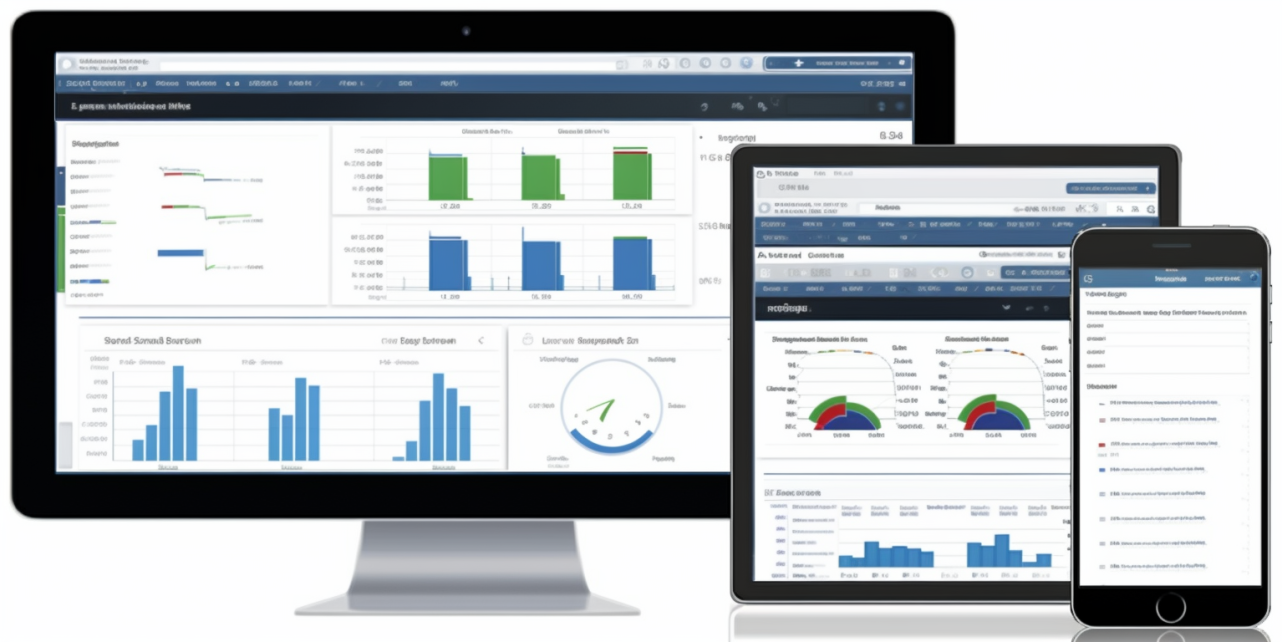Measuring ROI with CMMS KPIs
Effective use of KPI is crucial for organizations to understand the impact their CMMS implementation has in terms of Return on Investment (ROI). ROI measures the net gain (or loss) of an investment. It is important to measure the benefits of investing in a CMMS to determine the ROI accurately.
To effectively measure ROI, organizations need to identify and track the following KPIs: Cost savings from a CMMS, ratio of preventive maintenance to corrective maintenance, cost savings in terms of the drop in breakdowns, maintenance cycle times and downtime, inventory, and procurement costs reduction, process improvement, and SLAs achievement rates.
Cost savings from a CMMS should be tracked to determine whether the investment has been valuable or not. The ratio of preventive maintenance to corrective maintenance should also be monitored to evaluate the efficiency of the CMMS. Tracking cost savings in terms of the drop in breakdowns, maintenance cycle times and downtime will give organizations an idea of how the CMMS has improved their operations. This also helps in highlighting the possible opportunities for further improvements down the line.
Organizations should also track inventory and procurement costs to calculate the true ROI of their CMMS. By evaluating how much better the processes are after a CMMS implementation, organizations can gain insight into process improvement. Further, they should monitor SLA achievement rates to measure the performance of the CMMS. By measuring these relevant KPIs, organizations can gain a comprehensive understanding of their CMMS implementation’s ROI.
Different KPIs Used to Measure the ROI of CMMS
Organizations that want to accurately assess the ROI of their CMMS should measure the cost savings it provides, the ratio of preventive maintenance to corrective maintenance, reduction in breakdowns, maintenance cycle times and downtime, inventory and procurement costs, process improvement, and SLA achievement rates. These KPIs will give them an insight into the degree of success of their CMMS implementation as well as potential areas of improvement. By measuring these relevant KPIs, organizations can gain a comprehensive understanding of their CMMS implementation’s ROI.
Cost Savings from a CMMS as a KPI
Organizations need to measure cost savings from a CMMS to effectively evaluate the investment in this system. Track the ratio of preventive maintenance to corrective maintenance, cost savings in terms of drop in breakdowns, maintenance cycle times and downtime, inventory and procurement costs reduction, process improvement, and SLA achievement rates. By tracking these metrics, organizations can gain a comprehensive understanding of their CMMS implementation’s ROI and identify any potential areas for improvement.
Ratio of Preventive Maintenance to Corrective Maintenance as a KPI
Organizations should monitor the ratio of preventive maintenance to corrective maintenance to evaluate the efficiency of their CMMS implementation. This KPI will help them understand how quickly they are responding to breakdowns. How effective their preventive maintenance program is, and where they can make improvements. By tracking this KPI, organizations can measure their CMMS investment’s ROI and identify areas where they can make further improvements.
Cost Savings in Terms of the Drop in Breakdowns as a KPI
Organizations should track cost savings in terms of the drop in breakdowns to measure their CMMS investment’s ROI accurately. This KPI will help them gain an understanding of how effective their CMMS implementation has been in reducing the number of breakdowns. Moreover, tracking this KPI can help organizations identify possible areas for improvement, such as reducing maintenance cycle times and downtime. By measuring the abovementioned KPIs, organizations can gain a comprehensive understanding of their CMMS implementation’s ROI.
Tracking Inventory and Procurement Costs as KPIs
Organizations should measure inventory and procurement costs associated with their CMMS implementation to accurately evaluate the return on investment (ROI). This KPI helps in identifying cost savings in procurement and stocking of spares, tracked performance of suppliers and vendors, and end-to-end inventory management process. Organizations can identify areas of improvement, such as having better inventory utilization and improved supplier performance. Monitoring inventory and procurement costs provides a comprehensive understanding of the CMMS ROI and helps organizations optimize their performance.
Measuring the Impact of Process Improvement and SLAs as KPIs
Organizations should measure the impact of process improvement and SLAs when assessing the ROI of their CMMS implementation. Process improvement KPIs can be measured by evaluating how much better the processes are after CMMS implementation. SLA achievement rates can be monitored to measure the performance of the CMMS and identify potential areas of improvement.
Key Takeaways
Organizations should measure the cost savings from a CMMS. The ratio of preventive maintenance to corrective maintenance, and cost savings in terms of the drop in breakdowns. Maintenance cycle times and downtime, inventory and procurement costs reduction, process improvement, and SLA achievement rates to accurately measure the ROI of their CMMS implementation. Monitoring KPIs help organizations gain an understanding of the success of their CMMS implementation as well as identify areas of improvement to further optimize performance. Additionally, organizations should evaluate how much better the processes are after CMMS implementation to measure the impact of process improvement. Tracking SLAs will help measure the performance of the CMMS and identify possible areas of improvement. By measuring these KPIs, organizations can gain a comprehensive understanding of their CMMS implementation’s ROI.



